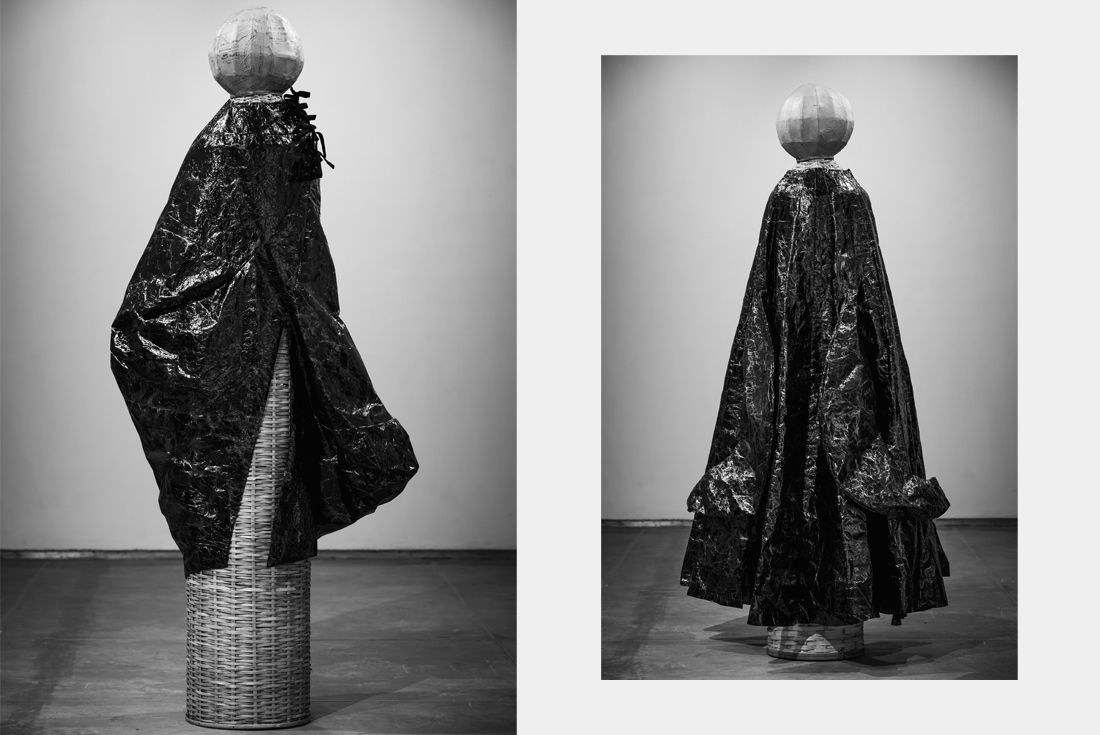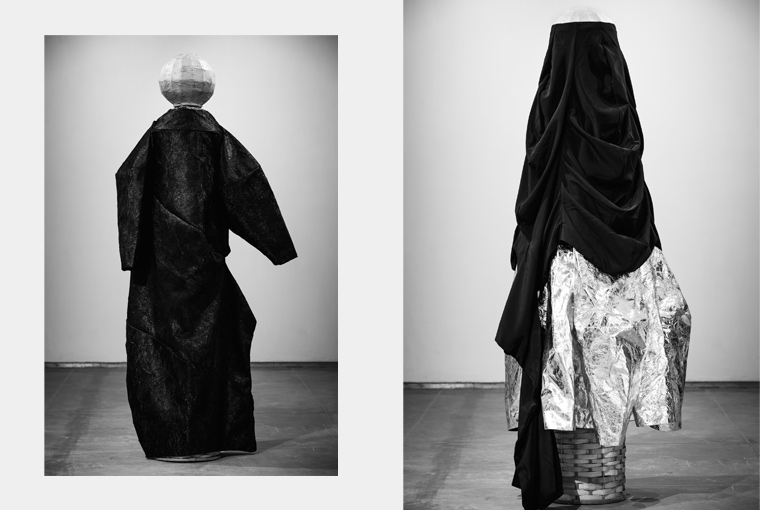

Random Access, Kallol’s first exhibition at Experimenter in Kolkata, delves into conceptual frameworks that bind his work and reveal questions that confront him in his quest for understanding form. These questions constantly toggle between the faktura and the tektonika. Questions such as how do you cut when there is no front?... And no back? Absence of a shoulder and neither armholes nor any sides to the form? Especially when no perceivable gender is associated with the structure, should one then cut to just cover and clothe the structure? Or should one continue with the way one normally makes clothes? Or is there a middle ground to discover? Equally interested in exploring material, Kallol experiments with cottons and crepe silks, cutting them on their bias and placing them on their axis which still is capable of holding the garment’s balance.

Kallol uses garbage bag fabric, treating reclaimed silk and cotton to give the appearance of the ubiquitous garbage bag in the garments at the show that appear to stand on mono dress forms. Appearing to have no material value on first encounter, the silhouettes created using the garbage bag material at Experimenter have an added plastic film, layered on the textile, changing the behaviour of the material furthermore.
At one end of the gallery, a series of pattern-cut paper drawings resemble multi-layered collages and at the other end, metal panels hold folded fabric sculptural experiments. Brass miniature sculptures of the amorphous dress forms, invoke the relationship between the possible renditions of the form in other unexpected material. Kallol allows himself access to questions of material, form and structure reflecting on the complex three-way interaction between the garment, the viewer and the wearer in Random Access.
Kallol Datta, born in 1983 is a ‘clothes maker’, who graduated in 2006 from Central Saint Martins. Throughout his career, Kallol has been working towards understanding how the body adapts to the fabric form. Often, three dimensional, free flowing folds create shapes and silhouettes, against prescribed fits and desired proportions. Making structural experimentations in pattern cutting, Kallol ‘skews’ traditional geometry to create garments, which collapse when not worn. His practice has a strong relationship to Constructivism as the combination of faktura – the visually apparent properties inherent to materials of an object, and tektonika – its spatial presence... axes that consistently appear in the objects and garments. Moreover, like the Constructivists, Kallol works on interpreting three-dimensional constructions as a means of expression in his practice, making his work have a certain distinct sculptural presence in its final worn form. He lives and works out of Calcutta.